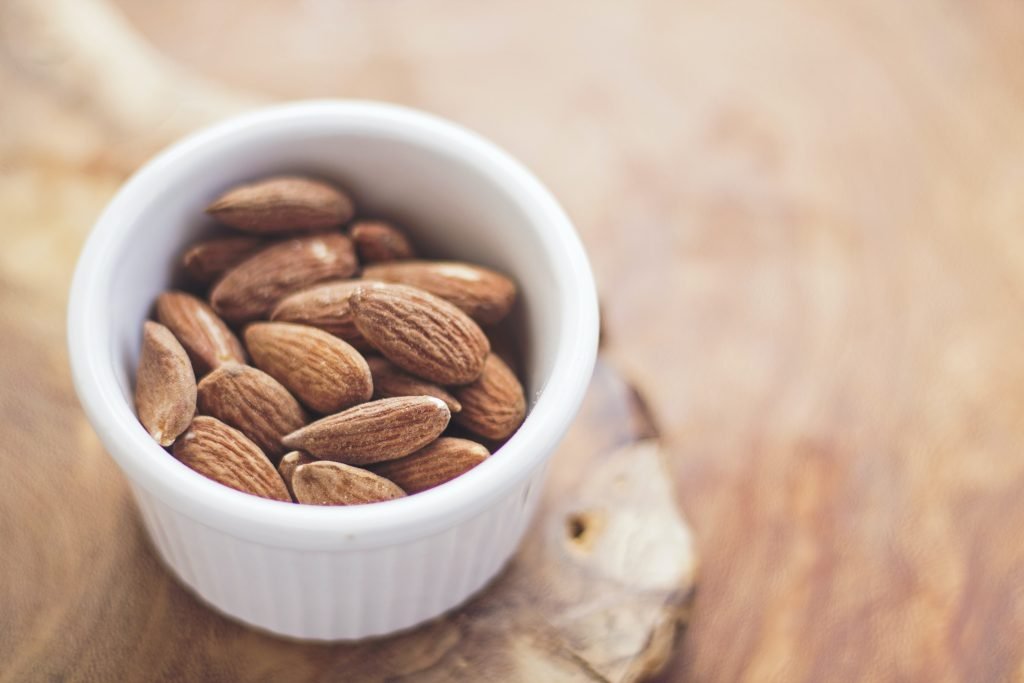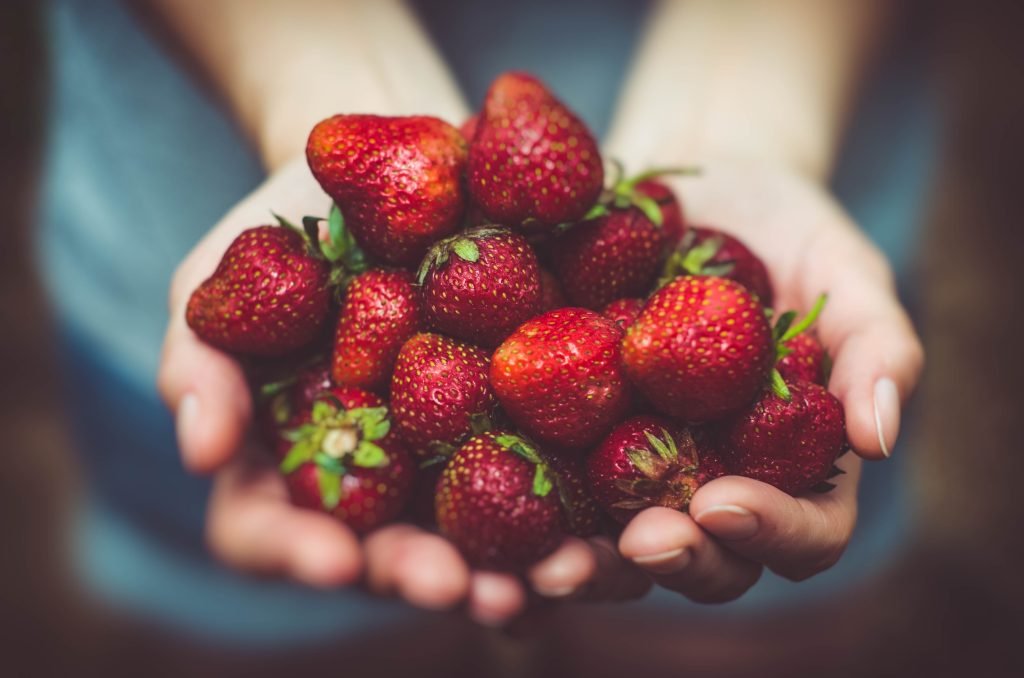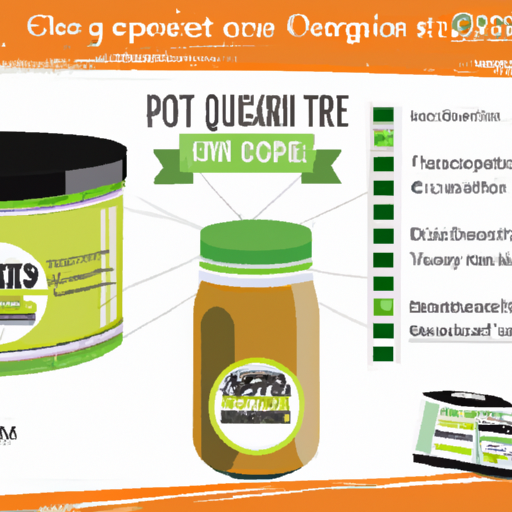So, what foods should I stockpile for survival? You hear the sound of thunder rumbling in the distance as dark clouds gather overhead. Your heart starts to race, as you realize that a disaster could be imminent. Whether it’s a natural disaster, a pandemic, or a sudden financial crisis, being prepared for survival becomes crucial.
But amidst the chaos, what foods should you stockpile to ensure you have the sustenance you need? In this article, we will explore the essential foods that should make it to the top of your survival stockpile list, ensuring you are prepared for whatever the future may hold.

What Foods Should I Stockpile For Survival? Canned Foods
When it comes to stockpiling food for survival, canned foods are a reliable and convenient option to consider. They have a long shelf life, making them perfect for emergency situations or when fresh produce is not readily available. Canned foods come in a variety of categories, including vegetables, fruits, meat and fish, soups and broths, and beans.
Vegetables
Canned vegetables are a fantastic choice for stocking up, as they provide essential nutrients and can be used in various recipes. Options like carrots, peas, green beans, and corn can add flavors and textures to your meals even in challenging times. Plus, the canning process helps lock in the nutrients, ensuring they stay intact for an extended period.
Fruits
Canned fruits are a delicious and nutritious addition to your survival stockpile. Whether it’s peaches, pears, pineapple, or mixed fruit, these cans of sweetness can bring a welcome burst of flavor to your meals or serve as a standalone snack. They are packed with vitamins and minerals that your body needs to stay healthy, especially during stressful times when fresh fruits may not be available.
Meat and Fish
Canned meat and fish can be a lifesaver during emergencies when access to fresh produce is limited. Tuna, chicken, ham, and sardines are just a few options to consider. Not only do they provide a good source of protein, but they can also be used in a variety of recipes to add flavor and substance. These cans are easy to store and have a long shelf life, making them ideal for survival situations.
Soups and Broths
Stocking up on canned soups and broths is a smart move for your survival food supply. They offer a quick and easy way to prepare a warm and comforting meal when fresh ingredients are scarce. Whether it’s chicken noodle soup, vegetable soup, or beef broth, these cans provide nourishment and help satisfy hunger during challenging times.
Beans
Beans are a versatile and nutritious staple for any survival stockpile. Canned beans, such as kidney beans, black beans, chickpeas, and refried beans, can be added to various dishes to boost protein and fiber content. They are a great source of plant-based protein and can be used in soups, stews, salads, or even as a standalone side dish.
What Foods Should I Stockpile For Survival? Dried Foods
In addition to canned foods, dried foods should also be on your list when stocking up for survival. They have a long shelf life and can provide you with essential nutrients even when fresh options are scarce.
Beans and Lentils
Dried beans and lentils are excellent sources of protein and fiber. They are inexpensive, lightweight, and easy to store, making them ideal for survival situations. From black beans and kidney beans to lentils and chickpeas, these dried varieties can be cooked and added to a variety of meals, such as soups, stews, and rice dishes.
Rice and Pasta
Rice and pasta are essential staples in many households, and they deserve a spot in your survival stockpile too. These dried foods are filling and can be a versatile base for endless meal possibilities. Whether it’s white rice, brown rice, spaghetti, or macaroni, having these items on hand can provide sustenance and comfort during challenging times.
Dried Fruits
Dried fruits are a tasty and nutritious addition to any survival food supply. They are lightweight, easy to store, and can provide a natural source of sweetness when fresh fruits are not available. Options like raisins, cranberries, apricots, and mango slices can be enjoyed as a snack, added to trail mix, or used in baking for a burst of flavor.
Powdered Milk
Powdered milk is a practical alternative to fresh milk when you’re preparing for survival situations. It has a significantly longer shelf life and can be reconstituted with water whenever needed. Powdered milk can be used in recipes, cereals, or simply enjoyed as a beverage. It provides essential nutrients like calcium and protein, ensuring you have a reliable dairy source even in challenging circumstances.
Nuts and Seeds
Including nuts and seeds in your survival stockpile is a wise move for both nutrition and variety. Options like almonds, walnuts, sunflower seeds, and chia seeds offer healthy fats, protein, and other essential nutrients. They can be enjoyed as a snack, added to salads or cooked dishes, or even used for baking. Nuts and seeds are compact, lightweight, and have a long shelf life, making them a convenient addition to your survival food supply.
What Foods Should I Stockpile For Survival? Long-lasting Staples
When stocking up for survival, it’s important to include long-lasting staples that can provide sustenance and versatility in various situations. These staples have an extended shelf life and can be used in a multitude of recipes.
Honey
Honey is a natural sweetener that also boasts antibacterial properties, making it an excellent choice for your survival stockpile. It can be used as a sugar substitute, added to recipes, or even enjoyed on its own. Honey has an indefinite shelf life and can be a valuable source of energy and nourishment.
Salt
Salt is not just a seasoning; it’s a vital ingredient that plays a crucial role in preserving food and adding flavor. Having an ample supply of salt in your survival stockpile is essential for both cooking and preserving harvested game or fish. Salt can also be used to make homemade electrolyte drinks to maintain hydration levels during emergencies.
Sugar
Sugar is another staple that can serve multiple purposes in a survival situation. Besides being a sweetener for beverages or desserts, sugar can also be used as a preservative for fruits or homemade jams, and it can even be added to savory dishes to balance flavors. A supply of sugar ensures you have a versatile ingredient to enhance the taste of your meals or provide a much-needed energy boost.
Flour
Flour is a fundamental ingredient for baking and cooking, making it a must-have in your survival stockpile. It can be used to make bread, biscuits, cakes, and even pasta. Whether it’s all-purpose flour, whole wheat flour, or alternative flours like almond or coconut flour, having a variety of options ensures you can still enjoy homemade meals even during challenging times.
Oats
Oats are a versatile grain that provides a good source of fiber, protein, and essential nutrients. Stocking up on oats ensures you have a nutritious and filling option for breakfasts or snacks. Whether it’s rolled oats, quick oats, or steel-cut oats, they can be used to make oatmeal, granola bars, or added to baked goods for an extra nutritional boost.
What Foods Should I Stockpile For Survival? Cereal and Grains
Cereals and grains are convenient and easy-to-prepare options that provide energy and nourishment. Perfect for quick breakfasts or on-the-go snacks, these items should have a place in your survival stockpile.
Cereal
Cereal is a familiar and comforting breakfast choice for many. Having a variety of cereals in your survival stockpile ensures you have a quick and easy option to start your day with a burst of energy. Whether it’s flakes, granola, or puffs, cereal can provide essential vitamins and minerals to keep you fueled.
Granola Bars
Granola bars are a compact and portable snack option that can provide sustenance on the go. They are typically made with a combination of oats, nuts, and dried fruits, offering a balanced mix of carbohydrates, protein, and healthy fats. Granola bars can be a great source of quick energy and can help satisfy hunger in survival situations.
Quinoa
Quinoa is a versatile and nutritious grain that deserves a spot in your survival food supply. It is rich in protein, fiber, and essential minerals, making it a valuable and filling addition to meals. Quinoa can be cooked and used as a base for salads, soups, stir-fries, or even as a side dish on its own.
Couscous
Couscous is a quick-cooking grain made from durum wheat semolina. It offers a convenient way to add carbs to your meals in no time. Simply pour boiling water on couscous, let it sit for a few minutes, and it’s ready to be enjoyed. Couscous can be used as a side dish, added to salads, or even stuffed into peppers for a flavorful meal.
Bread
Bread is a staple in many diets across the world, providing sustenance and versatility. While fresh bread may not be feasible in survival situations, there are options like shelf-stable bread that can be a valuable addition to your stockpile. Whether it’s store-bought or homemade, having bread on hand allows you to enjoy sandwiches, toast, or even use it as a base for homemade breadcrumbs.

What Foods Should I Stockpile For Survival? Canned and Powdered Milk
Having a reliable source of milk is essential, especially if fresh milk is not readily available. Canned and powdered milk options can provide the necessary nutrients and flexibility in your survival stockpile.
Evaporated Milk
Evaporated milk is a canned milk product that has undergone a process of removing about 60% of the water content. It has a creamy texture and is shelf-stable, making it an excellent option for your survival supply. Evaporated milk can be used in recipes that call for milk, making it a versatile ingredient for both cooking and baking.
Condensed Milk
Condensed milk is another canned milk product that has had water removed, but it also has sugar added to it. This gives it a thick and sweet consistency, making it a popular choice for desserts and sweet treats. While condensed milk should be consumed in moderation due to its high sugar content, it can be a valuable addition to your stockpile for adding sweetness to your survival meals.
Powdered Milk Alternatives
If you prefer or require non-dairy milk alternatives, there are powdered options available for your survival stockpile as well. Powdered soy milk, almond milk, or coconut milk can be reconstituted with water and used in recipes, cereals, or as a beverage substitute. These alternatives provide essential nutrients, making them suitable options for those with specific dietary needs or preferences.
Baby Formula
For families with infants or young children, having an adequate supply of baby formula is crucial in survival scenarios. Ensuring you have the necessary nutrients and feeding options for your little ones can bring peace of mind during challenging times. Stocking up on cans or packets of baby formula ensures you can provide nourishment and sustenance for your child, even when other food sources may be limited.
What Foods Should I Stockpile For Survival? Meat and Fish
Protein is a crucial component of a balanced diet, and having a variety of canned meat and fish options in your survival stockpile can ensure you meet your nutritional needs.
Canned Tuna
Canned tuna is a popular choice due to its versatility and long shelf life. It is a good source of lean protein and can be used in numerous recipes, such as sandwiches, salads, pasta dishes, or simply enjoyed on its own. Whether you opt for tuna in water, oil, or flavored varieties, having cans of tuna on hand can provide sustenance and flavor when fresh protein sources are not accessible.
Canned Chicken
Canned chicken is another convenient protein option for your survival stockpile. It can be used in various ways, including sandwiches, salads, casseroles, or soups. Canned chicken is pre-cooked, which allows for quick and easy meal preparation during emergencies or when fresh poultry is not available.
Canned Ham
Canned ham is an excellent choice for those who enjoy the taste and versatility it offers. It can be sliced and enjoyed as a standalone protein source, used in sandwiches, added to omelets, or incorporated into stews and casseroles. Canned ham has a long shelf life and can provide a savory and satisfying addition to your survival meals.
Jerky and Dried Meats
Jerky and dried meats are not only delicious snacks but also portable sources of protein. They have a long shelf life and are lightweight, making them perfect for survival situations or when you’re on the move. Jerky can be made from beef, turkey, or other meats, and it provides a satisfying and flavorful protein boost.
Canned Sardines
Canned sardines may not be everyone’s first choice, but they are an excellent source of omega-3 fatty acids, protein, and other essential nutrients. They can be enjoyed on crackers, added to salads, or incorporated into pasta dishes. Canned sardines are compact, have a long shelf life, and are a valuable addition to your survival food supply.

What Foods Should I Stockpile For Survival? Vegetables and Fruits
Having a variety of canned vegetables and fruits ensures you still get your necessary vitamins and minerals, even when fresh produce may not be available.
Canned Vegetables
Canned vegetables are a convenient alternative to fresh produce during survival situations. Options like green beans, corn, peas, carrots, and potatoes can be easily added to stews, soups, or cooked as standalone side dishes. Canned vegetables retain many of their nutrients, providing you with essential vitamins and minerals when fresh options are scarce.
Canned Fruits
Canned fruits are a delightful addition to your survival food supply. Options like peaches, pears, mixed fruit, or pineapple can add sweetness and variety to your meals. They can be enjoyed on their own, added to desserts, or even used in baking recipes. Canned fruits are a valuable source of vitamins and minerals, ensuring your nutritional needs are met even during challenging times.
Dried Vegetables
Dried vegetables are lightweight, space-saving, and have a long shelf life, which makes them an excellent addition to your survival stockpile. Options like dried mushrooms, tomatoes, peas, or bell peppers can be rehydrated and used in a variety of recipes, such as soups, stews, or pasta dishes. Dried vegetables provide a burst of flavor and nutritional value even when fresh options are not available.
Dried Fruits
Dried fruits, similar to canned fruits, provide a natural source of sweetness and essential nutrients. Options like raisins, apricots, apples, or cranberries can be enjoyed as a snack, added to trail mixes, or used in baking recipes. Dried fruits are lightweight, have a long shelf life, and can be enjoyed any time, making them a valuable addition to your survival food supply.
Fruit Cups
Fruit cups are another convenient option for your survival stockpile. They offer individual servings of fruit, making it easy to manage portions and maintain freshness. Whether it’s peaches, mandarin oranges, or mixed fruit cups, they can provide sweetness and vital nutrients during survival situations. Fruit cups are also portable and can be enjoyed on the go, making them suitable for emergency situations or when mobility is essential.
What Foods Should I Stockpile For Survival? Snacks and Treats
While survival situations may be challenging, there’s no reason why you can’t indulge in some snacks and treats to uplift your spirits. Including a variety of these items in your survival stockpile can provide comfort and satisfaction during stressful times.
Chocolate Bars
Chocolate bars can be both a delicious treat and a valuable source of energy during survival situations. They offer a quick burst of sweetness and can provide a much-needed mood booster. Whether it’s dark chocolate, milk chocolate, or even chocolate with added nuts or fruits, having a stash of chocolate bars can bring joy and comfort when you need it most.
Cookies
Cookies are a classic comfort food that can add a bit of nostalgia and sweetness to your survival meals. Whether you prefer chocolate chip cookies, oatmeal cookies, or shortbread cookies, having a stockpile of your favorites can be a morale booster during difficult times. Cookies can provide a quick snack or be enjoyed with a cup of hot chocolate or tea for a comforting treat.
Crackers
Crackers are versatile snacks that can be enjoyed on their own or paired with various toppings. Whether it’s plain, salted, or flavored varieties, crackers can provide a satisfying crunch and help curb hunger. They can be paired with canned meats, cheese, spreads, or even used as a base for mini sandwiches. Crackers have a long shelf life and are lightweight, making them a valuable addition to your survival food supply.
Trail Mix
Trail mix is a convenient and energy-packed snack option for survival situations. It typically consists of a mix of nuts, dried fruits, and sometimes chocolate or seeds. Trail mix can provide a balance of protein, healthy fats, and carbohydrates, which fuels your body and satisfies hunger. This portable snack requires no refrigeration and can be easily portioned out for individual servings.
Peanut Butter
Peanut butter is a versatile and nutritious food that deserves a place in your survival stockpile. It is a good source of protein and healthy fats, making it a satisfying addition to meals or a standalone snack. Peanut butter can be enjoyed on crackers, bread, or even added to recipes for a boost of flavor and nutrition. It has a long shelf life and can be a valuable source of sustenance during survival situations.

What Foods Should I Stockpile For Survival? Beverages
Staying hydrated is essential for survival, and having a variety of beverages on hand can ensure you have the necessary fluids to stay healthy and comfortable during challenging times.
Bottled Water
Bottled water is an absolute necessity in any survival situation. Having an ample supply of clean drinking water is crucial for staying hydrated and maintaining overall health. It’s recommended to have at least one gallon of water per person per day for drinking and sanitation purposes. Store bottled water in a cool, dark place and regularly rotate your supply to maintain its freshness.
Canned Juices
Canned juices can be a refreshing and flavorful addition to your survival stockpile. They can provide essential vitamins and hydration while offering a welcome change from plain water. Options like orange juice, apple juice, or grape juice can bring a burst of natural sweetness and be enjoyed as a standalone beverage or mixed with water to conserve supplies.
Coffee and Tea
Having a supply of coffee or tea can provide comfort and that much-needed caffeine boost during survival situations. Coffee can provide a pick-me-up in the morning or a warm beverage to enjoy throughout the day. Instant coffee or coffee bags are convenient options as they require minimal preparation. Tea, on the other hand, offers a wide variety of flavors and can be enjoyed hot or cold. Herbal teas can also provide medicinal benefits and help soothe and relax.
Hot Chocolate
Hot chocolate is a comforting and indulgent beverage that can boost morale during stressful times. Whether it’s a traditional cocoa mix or powdered packets with marshmallows, hot chocolate can provide warmth and a sweet treat. This beverage option is especially valuable for cold weather or when a little taste of comfort is needed.
Energy Drinks
While energy drinks should be consumed in moderation, having a couple on hand can provide an additional energy boost during survival situations. They contain caffeine and other ingredients that can help improve focus and increase alertness. Energy drinks can be especially useful during times of physical exertion or emergency response when the body may need an extra jolt to keep going.
What Foods Should I Stockpile For Survival? Spices and Seasonings
Spices and seasonings are often overlooked when stockpiling food for survival, but they can make a significant difference in the taste and flavor of your meals. Including a variety of these items can help enhance the overall enjoyment of your food, even during challenging times.
Salt
Salt is a fundamental seasoning that is necessary for both cooking and preserving food. It enhances flavors and helps balance the taste of various ingredients. Having an ample supply of salt in your survival stockpile allows you to season your meals and preserve harvested food if necessary. Salt can also be used to make homemade electrolyte drinks to replenish essential minerals during emergencies.
Pepper
Pepper is another essential seasoning that pairs well with a variety of dishes. Its versatility allows you to add a hint of spiciness and depth of flavor to your meals. Whether it’s black pepper, white pepper, or even chili flakes, having pepper in your stockpile can ensure your meals are not lacking in taste.
Garlic Powder
Garlic powder is a convenient way to add the taste and aroma of fresh garlic to your survival meals. It adds depth and flavor to various dishes without the need for fresh garlic cloves. Garlic powder can be used in soups, stews, marinades, or even sprinkled over roasted vegetables for an extra kick of flavor.
Cinnamon
Cinnamon is a versatile spice that can be used in sweet and savory dishes alike. Its warm and comforting flavor brings depth and richness to baked goods, oatmeal, beverages, or even meat marinades. Cinnamon adds a touch of familiarity and cozy aroma to your survival meals, making it a valuable addition to your stockpile.
Paprika
Paprika is a spice made from ground dried red peppers, providing a sweet and smoky flavor to your dishes. It adds a vibrant color and mild heat, elevating the taste and presentation of your meals. Paprika pairs well with meats, stews, soups, and even roasted vegetables. Having paprika in your survival stockpile allows you to add a burst of flavor and visual appeal to your meals.
In conclusion, when it comes to stockpiling food for survival, it’s essential to consider a variety of options that can provide essential nutrients, versatility in meal preparation, and comfort during challenging times. Canned foods, dried foods, long-lasting staples, cereal and grains, canned and powdered milk, meat and fish, vegetables and fruits, snacks and treats, beverages, and spices and seasonings all have their place in a well-rounded survival stockpile. By carefully selecting and stocking up on these different categories of food items, you can ensure you have the necessary sustenance and enjoyment to navigate through any emergency or survival situation with confidence and peace of mind.

